|
A number of years ago I was staying with my friend Katy and her family in Lesvos and she told me about this wonderful island where she had lived for several years while her husband was teaching there. It was called Psara. I had never heard of it. I had to look for it on a map and when I found it I was kind of surprised. It was a small island, though the same size as several of the Cyclades Islands, located just west of Chios in the part of the North Aegean
that gets the
wind that blows down the Dardenelles keeping it cool on those summer days when much of Greece is sweltering, though the only village, which is called Psara, is on the southern side.
|
|
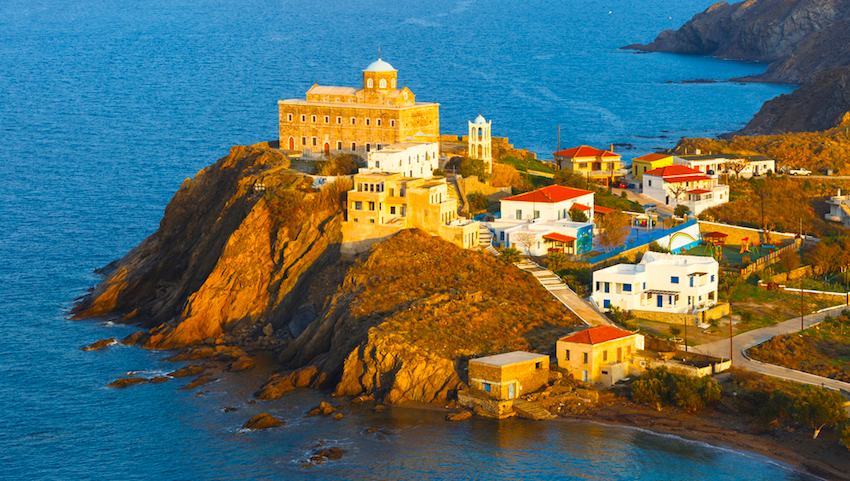
Psara is about as remote an island as you can visit in Greece. As soon you step off the boat you will see evidence of an earlier time when Psara had the greatest fleet and was dominant in the Aegean. Cannons, fortress, windmills, old houses built in the traditional architecture sit next to the not so traditional new houses of the village.
|
|
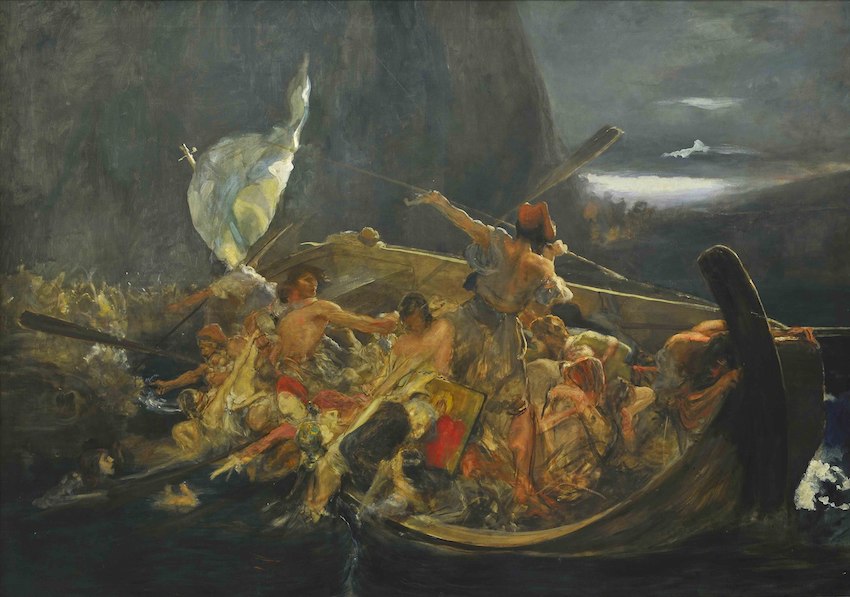
Psara has a long history and for thousands of years overlooked the routes of the vessels who cross the Aegean. Archaeological research found significant traces of the prehistoric period but there are obvious traces from every period of Hellenic history. The island of Psara has given Greece some of its finest seamen and Naval heroes. The name of Psara is known to lovers of art who are familiar with the painting After the Destruction of
Psara
by Nikolaos Gyzis, even though some of them may not know its tragic history.
|
|
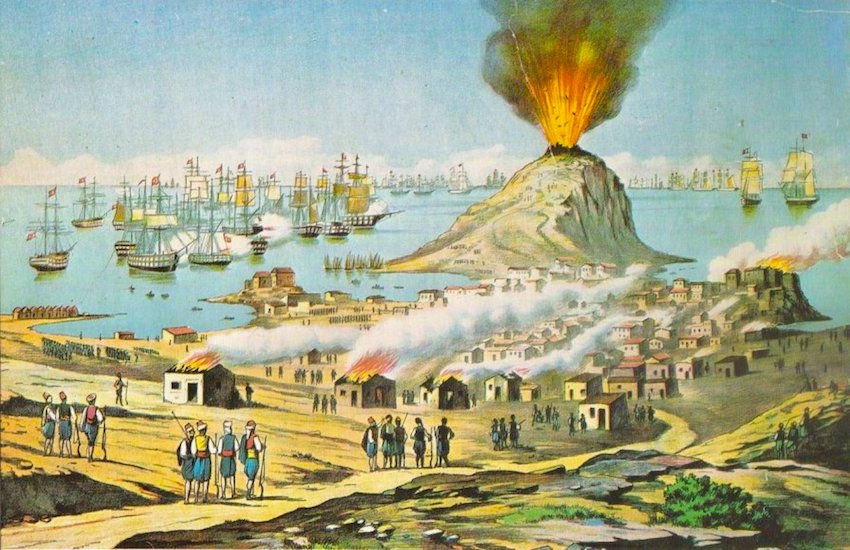
On July 5th 1824 the Ottoman Turks slaughtered the inhabitants of the island during the Greek War of Independence. The Turks invaded the island on June 21st and on July 4th stormed the fort of Palaiokastro where the inhabitants of the island had taken refuge. When the Turks demanded they surrender, the men, women and children of Psara threw them
a white flag with the words emblazoned on it "Freedom or Death". When the Turks entered the fortress Antonios Vratsanos lit a fuse to the gunpowder stored there and blew up the fortress, the Turks and the townspeople in an enormous explosion. It was compared to the eruption of Mount Vesuvius in Italy by the Europeans who watched from their ships in the bay, rendering no assistance. Some survivors managed to escape but most of them were killed or sold into slavery and the island
was deserted until
the First Balkan War in 1912 when it was returned to Greece. At it's peak Psara had about 8000 inhabitants but since it's destruction the population has
been under 1000. The Freedom or Death flag is still flown in Psara.
|
|
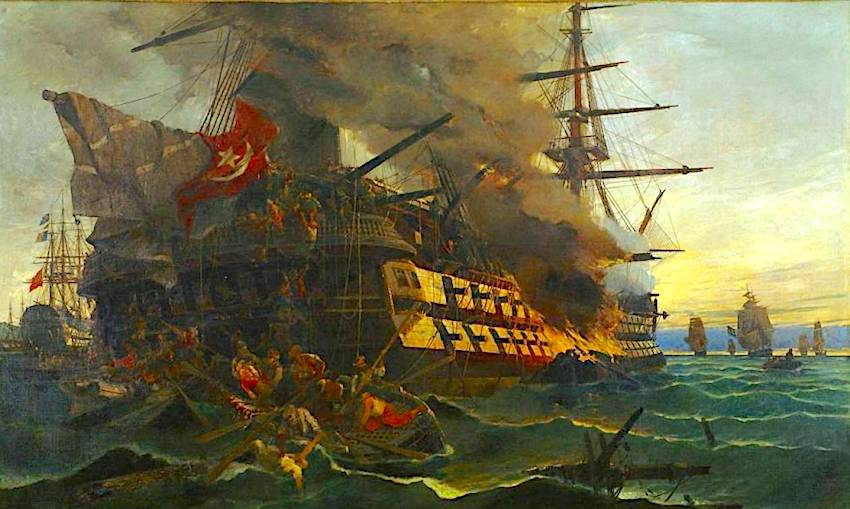
Those of us who visit Eressos, Lesvos regularly know the story of Dimitrios Papanikolis, who sank the Turkish Warship "Moving Mountain" in the bay on May 27 1821, an event that is celebrated every year by locals by building a small replica of the ship and setting it on fire in the bay. The painting is a depiction of the event
by Konstantinos Volanakis, the father of Greek seascape painting. It was the first time the Greeks were successful sinking a Turkish ship using fire ships and it was an inspirational event that changed the course of the war raising the morale of the Greeks and causing discouragement among the Turks. Papanikolas was from Psara and the Greek fleet had left the island to attack the Turkish ships. The Turkish ships however were too powerful and the Greeks had to withdraw. That night Papanikolis
successfully
sunk the largest of the ships using a fire ships, which is a boat filled with explosives, set on fire and steered into an enemy ship. The use of fire ships by the Greeks allowed them to overcome the Turkish fleet's superiority in terms of ship size and artillery power and they went on to use this strategy throughout the war very successfully.
|
|
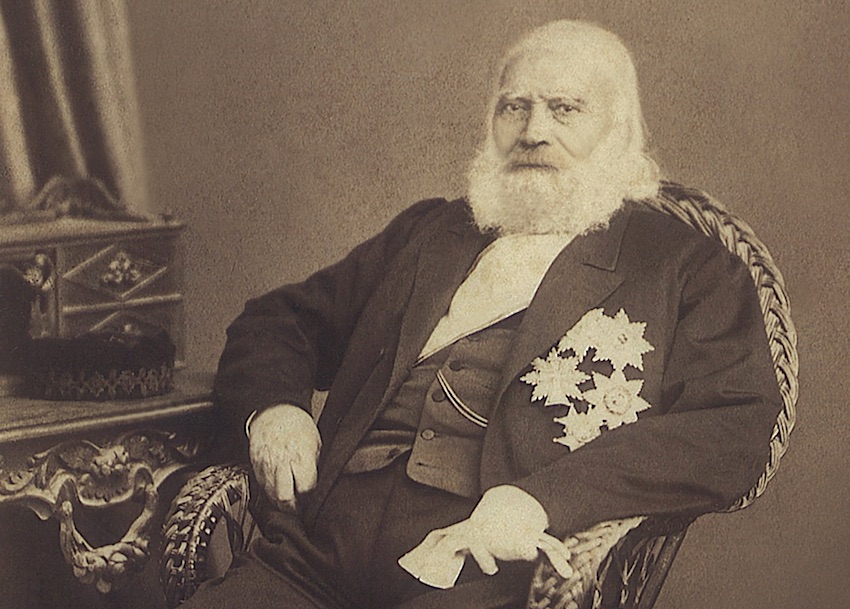
Another Greek national hero from Psara and one of the most important of the revolution was Konstantine Kanaris who in June of 1822 sank the Turkish flagship in the harbor of Chios, killing 2000 Turks including the admiral Kara Ali Pasha, in revenge for the Chios massacre. Later he became Prime Minister and lived in Kypseli, where the main square is called Platia Kanaris. In 1862, he helped in
the bloodless revolution that removed King Otto of Greece and replaced him with Prince William of Denmark who became King George I of Greece. Kanaris was Prime Minister for 3 terms and died while in office.
The destruction of Psara has also been memorialized by poets Andreas Kalvos and Dionysios Solomos.
|
|
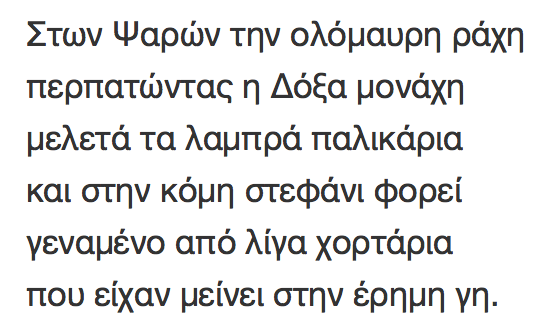
ΔΙΟΝΥΣΙΟΣ ΣΟΛΩΜΟΣ
|
In Psara, the all-black ridge
walking the Glory alone
studies the brilliant lads
and in his hair he wears a crown
made of a few herbs
that had remained in the desolate land.
Dionysios Solomos
|
|
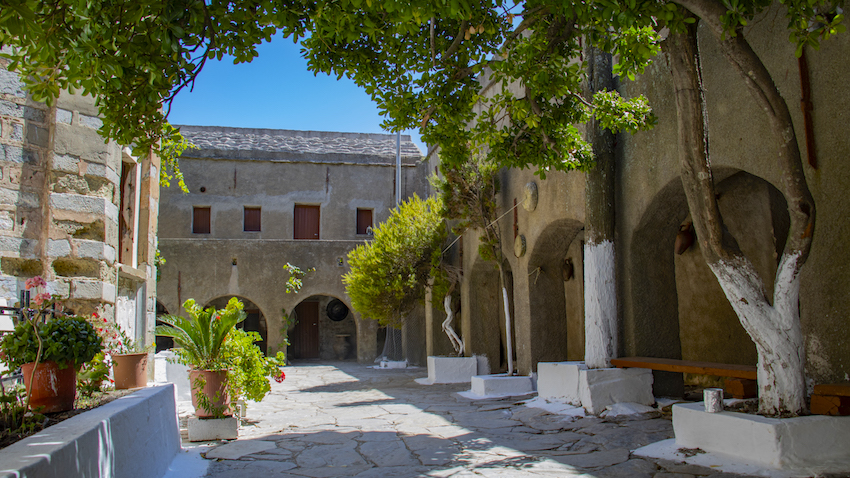
There are several historical places to explore on the island including Church of Agios Nikolaos, built in 1793, and the Monastery of the Dormition of Virgin Mary, with its rare manuscripts and religious books. It is about 9 kilometers from town and there is no public transport on the island but I am guessing that if you come to Psara that won't be an issue for you. But if you are exploring the island you will need a map or make sure you download
one for those moments where you need cell phone service and there is none.
|
|
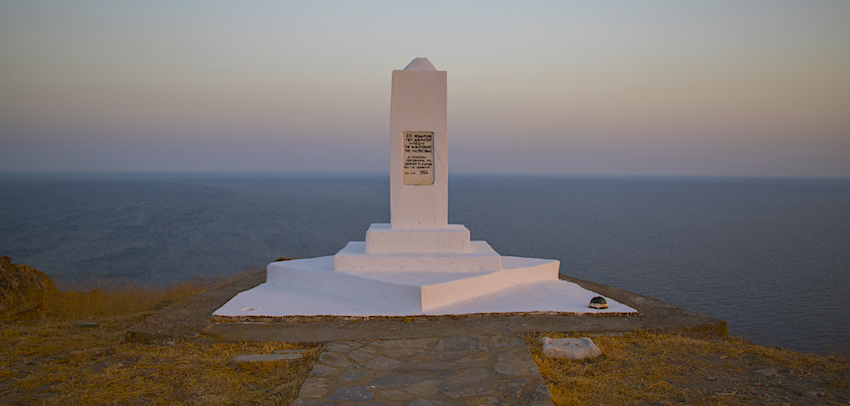
The most important historical spot is Mavri Rachi, the site of the original Paliokastro, the fortress that stood here until that day in 1824 when the people of Psara and the Turkish invaders perished together. A monument now occupies the spot. Besides the history it is the best place to watch the sunset.
|
|
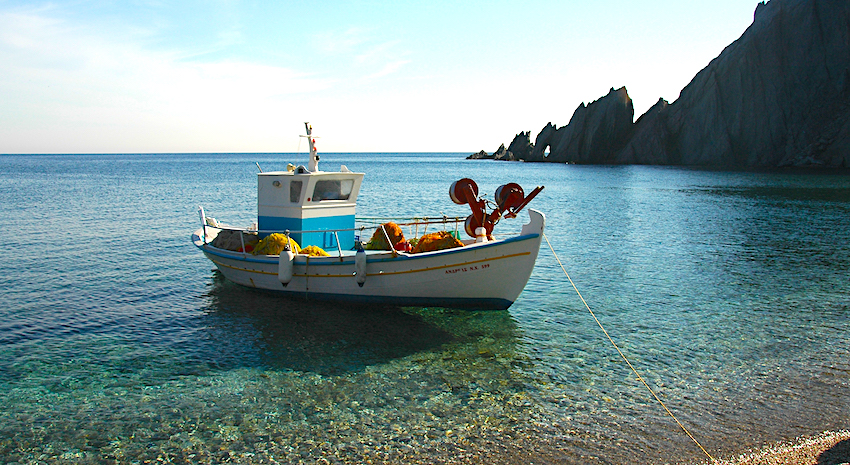
Currently the population of Psara in the winter is between 400-500 people. In the summer this number almost doubles since many Greeks who have origins from Psara come for their holiday, to enjoy it's beaches and seafood and spend time with the family members who still live on the island.
|
|
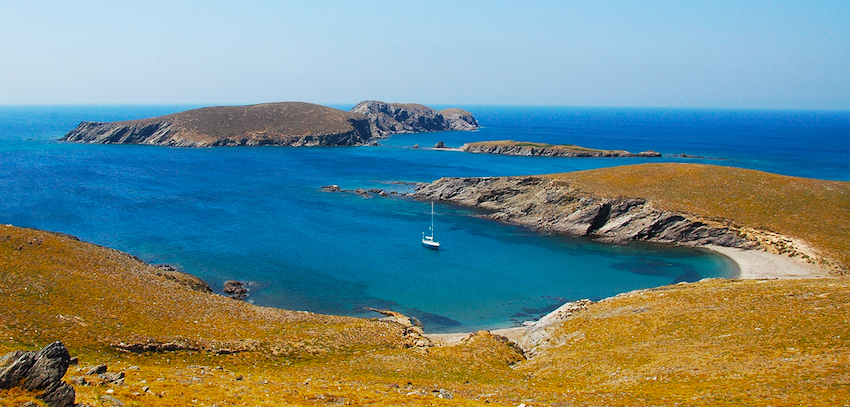
There are several beautiful beaches which if you come anytime except August you should have all to yourself including Katsounis and Kato Gialos, Lazaretta, Lakka or Lemnos beach. You can also hire a small boat to visit some isolated beaches like Limenaria or even visit Antipsara, a group of small islands west of Psara. But if you are a good walker you can reach many of the beaches
on the north
and west coasts on foot. Bring water.
|
|
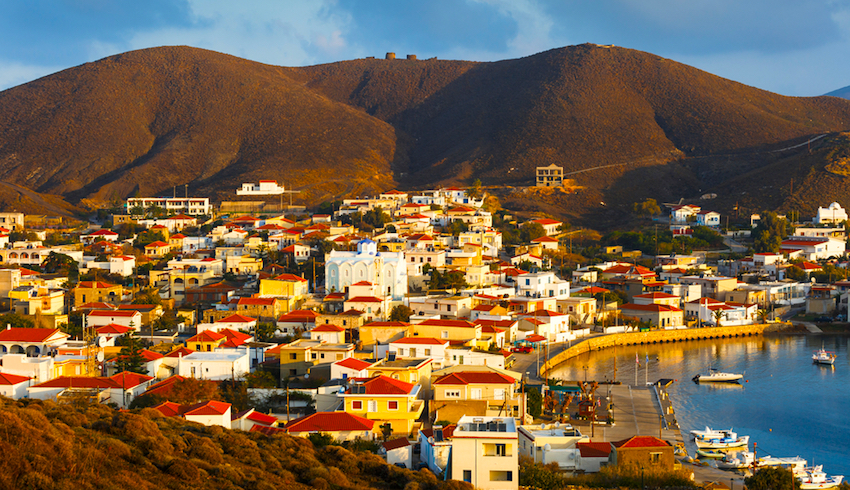
There are a couple of tavernas in Psara and all the shops necessary for an island with a year round population. Iliovaselima and Spitalia are both psarotavernas (fish restaurants) as many of the locals are fishermen, and one of the popular dishes of the island is Lobster Makaronada which people generally order the day before.
|
|
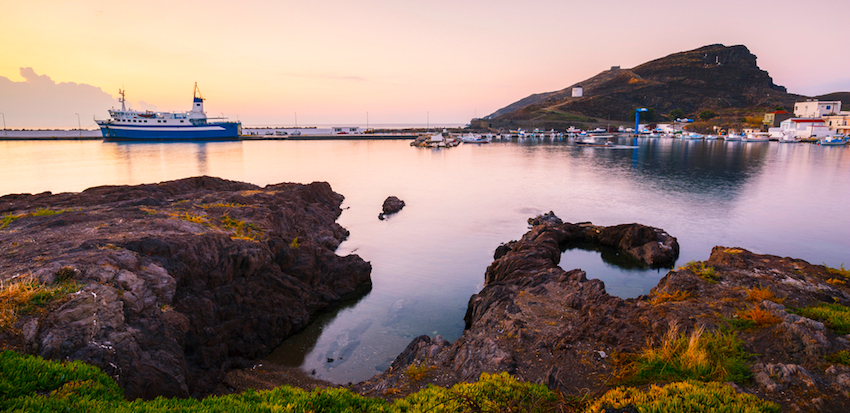
You can reach the island either from Chios (capital city of Chios island) daily on the boat Psara Glory in about an hour, or by excursions from Volissos (port in west Chios) also on the Psara Glory in about 20 minutes. Also, once the week (twice during the summer), there is a ferry which connects Piraeus with Chios and Lesvos that stops in Psara. You can check Ferryhopper.com for schedules and tickets.
|
| 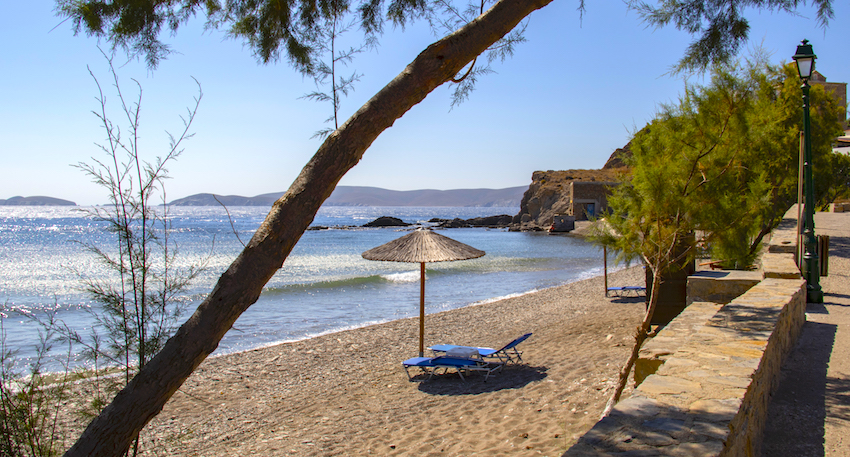
Psara is not an island for everyone. You would probably need to be someone who enjoys solitude and quietness, long walks in the hills, reading and reflecting. There are not many places to stay. Booking.com lists only the Kotrozena Home which provides self-catering accommodations
with free WiFi. But if it is only a 20 minute trip you can happily stay in Volissos, Chios and visit Psara in the daytime. See Volissos Hotels and Apartments. There are a couple hotels and some rooms though booking info on the hotels is hard to find so your best bet may be just to show up and ask around and hope you
find something, which you should
unless it is August.
|
|
You can come on an overnight trip on a Sailboat from Lesvos. George Malakos is a former architect, now a sailboat skipper doing charters and daily cruises from the island of Lesvos. See Sailing in Lesvos for more information and thank you George for your information and photos.
|